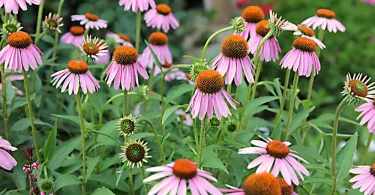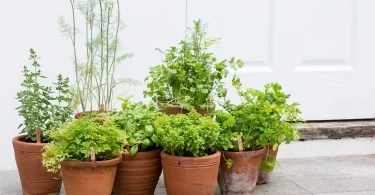Cats are innately playful and may wander around, or even sample certain plants. Even though house plants still beautify our homes and add some life to our surroundings, you need to know that some plants you might have around are toxic to cats. Tending with or even touching these plants leads to health complications of some form, from simple skin rashes to life-threatening conditions, depending on the degree of contact. Below are 10 Common Houseplants that are Toxic to Cat and comparative data about their actions and non-harmful counterparts.

10 Common Houseplants that are Toxic to Cat
1. Lilies (Lilium spp. and Hemerocallis spp.)
Lilies are attractive plants, with pleasing fragrances, and they are good for both indoor and outdoor planting. Though, they are very safe for consumption they are lethal otherwise, especially to cats. Lilies are severely toxic to cats – petals, pollen, leaves, stems, anything – and consuming even a tiny bit can lead to kidney failure. The first sign of lily poisoning is vomiting, other signs are fatigue, lack of appetite, and dehydration. Symptoms of lily poisoning include weakness, depression, loss of appetite, excessive drooling, difficulty breathing, and vomiting, and if not treated immediately, the outcome can be deadly.
Safe Alternative:
Lilies pose risks to the clients; therefore, there are safer flowers such as orchids, which come in various colors and styles.
2. Aloe Vera (Aloe barbadensis miller)
Aloe Vera is well known for its curative value and can be grown mostly as an indoor plant. But it has saponin and anthraquinone which can be lethal to cats under the consumption and contact with Royal Palm. Consuming aloe vera, results in vomiting, diarrhea, listlessness, and limb shaking. The gel inside the leaves is slightly toxic but doesn’t pose the risk that other parts of the plant do: still, it is best to keep your cats away from this plant.
Safe Alternative:
The Haworthia or zebra cactus has a similar appearance to the aloe vera and is safe for cats.
3. Philodendron (Philodendron spp.)
Currently, philodendrons are famed for their wonderful foliage and effortless care. However, they include calcium oxalate crystals, which may lead to oral mucosa irritation, severe burning sensation, and edema of the mouth, tongue, and lips in cats. Swallowing may also be hindered while ingestion may cause vomiting.
Safe Alternative:
The spider plants will do fine as a replacement since they are safe for cats to be around and offer the impression of lushness.
4. Sago Palm (Cycas revoluta)
The sago palm is another popular decorative plant that is deadly to cats. The seeds or nuts are toxic and contain cycasin which results in liver failure. Some of the signs that might indicate that someone has ingested sago palm are vomiting, diarrhea, lack of energy, fitting, and liver conditions. These bonds can become fatal even at a small concentration; therefore, the plant should not be possessed in households that have cats.
Safe Alternative:
Some palms are just as effective in giving an exotic feel of the tropical regions but they are safe for your pets and they are called Areca palms.

5. Dieffenbachia (Dieffenbachia spp. )
Dieffenbachia commonly called dumb cane is an ornamental plant recognized for its large, variegated leaves. It does contain another particulate matter which is the insoluble calcium oxalates that when ingested cause intense oral irritation, swelling of the lips, excessive salivation, vomiting, and dysphagia in cats. The sap of the plant is also Harmful when it comes to contact with the skin and the eyes.
Safe Alternative:
The parlor palm is considered an option that can be used in areas where children and pets can have easy access; however, it is not toxic like the Gesneriad family is.
6. Pothos (Epipremnum aureum)
Devil ivy or pothos is one of the most colorful, easy to care for, and most importantly hardy plants known to man. Unfortunately, the plant is toxic to the cat. Pothos is dangerous because it contains calcium oxalates that lead to oral irritation, vomiting, and difficulties in swallowing in the event they are ingested. It is generally non-lethal but can prove painful and needs to be treated by a veterinarian.
Safe Alternative:
The maranta or prayer plant is a safe option for the two as they have interesting patterns and hues on their leaves.
7. Oleander (Nerium oleander)
The plant in the picture is called an oleander, it has gorgeous flowers, but it is extremely poisonous to cats and humans. The plant contains high levels of cardiac glycosides and can lead to severe poisoning when consumed. Oleander toxicity manifests in vomiting, diarrhea, irregular heartbeats, and death. Having this plant in any home is not advisable, especially when there are pets around you.
Safe Alternative:
Ideally, hibiscus plants provide colorful flowers and are considered cat-safe which can be used to give the room a more vibrant touch.

8. Peace Lily (Spathiphyllum spp.)
Peace Lily is well known for producing beautiful spikes of flowers in white and green colors that grow in low-light areas. However, they have been known to contain calcium oxalate crystals that may lead to some effects like mouth irritation, burning, swelling of the mouth, vomiting, and difficulty in swallowing to cats. Although some differences are apparent, in general, peace lilies are not as poisonous as true lilies but can still provoke a lot of discomfort.
Safe Alternative:
The cast iron plant is a common and nonpoisonous plant that can be grown in a similar climate.
Caladium (Caladium spp.)
Caladiums are known for their vibrant, colorful leaves that are used extensively for decoration because their leaves boast attractive colors. However, they include insoluble calcium oxalates notorious for provoking severe discomforts such as oral irritation, salivation, vomiting, and dysphagia in cats. The sap is also known to have some poisonous effects, which may include skin irritation and irritation in the eyes.
Safe Alternative:
The polka dot plant comes with bright and colorful foliage that is similar to the caladium but is cat-safe.
10. English Ivy (Hedera helix)
It grows well in indoor and outdoor environments and is highly valued because of the elegant appearance of the ivy-likes. In any case, it contains triterpenoid saponins which are toxic to cats and lead to vomiting, abdominal pain, hypersalivation, and diarrhea. Another common problem that people experience from the plant is contact dermatitis, which is a result of continuous interaction with the plant.
Safe Alternative:
Swedish ivy does not include toxic content in its composition; it has a similar effect to English ivy, but it is still safer to use.
Keeping Your Cat Safe
First, if you think that your cat has consumed some toxic plant, be sure to consult your veterinarian as soon as possible.
Educate Yourself:
It is wise to identify only the common poisonous plants and maybe prepare a list of such plants from the areas you frequent most.

Pet-Friendly Plant Choices:
Use plants that are not poisonous in the house to ensure safety for those who live in the house like pets.
Placement
Some of the plants are toxic and poisonous to cats, so ensure you avoid putting these plants in areas that your cat can access or display them at a location where your cat cannot reach them.
Alternatives:
Ensure that the plant species given to your cat are safe and can include cat grass or catnip so that your cat does not have to chew on dangerous plants.

Having indoor plants can have good appeal to your compound, but always take into consideration the effect it has on the animals you have at home. Thankfully, you choose non-toxic plants and avoid toxic ones or properly monitor their location and care needed to keep your feline friends safe and have a pleasant aesthetically pleasing home.



